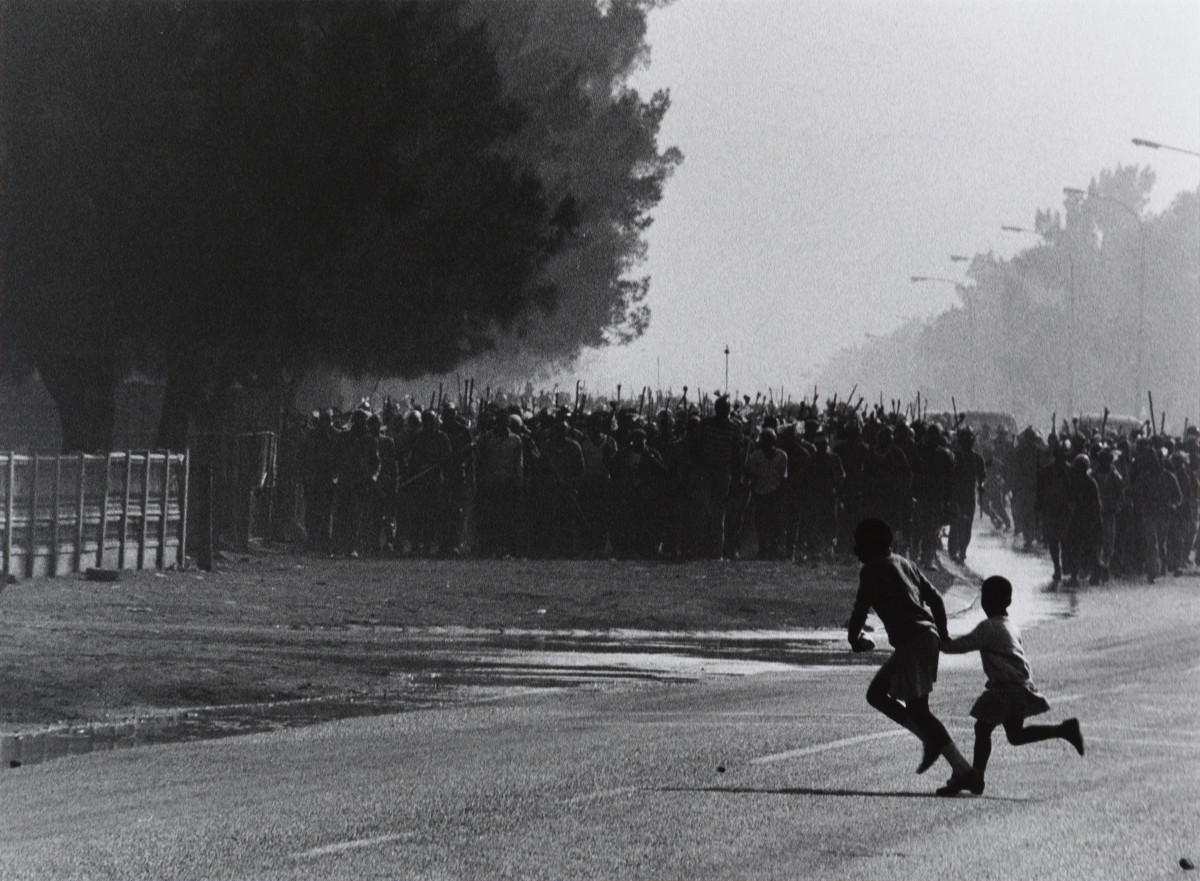Ken OOSTERBROEK (1963 – 1994)
Two Children In Thokoza On The East Rand Flee From An Advancing Band Of Armed Men Moving Down The Notorious Khumalo Street
1994
photographic film
36 x 49 cm
‘This photograph is probably Ken Oosterbroek’s best-known image and forms part of a series on the hostel purges that took place in Reef townships in 1990 during which hostel dwellers would hunt down members of opposing political parties,’ writes Mike Nichol in The Invisible Line (Kwela Books/Random House, 1998: 52).
Khumalo street, which stretches for more than seven kilometres, is the main road in Thokoza on the East Rand, and in the early Nineties, was the scene of endemic running battles between Inkatha Freedom Party-aligned hostel dwellers and township residents, most of whom supported the then newly unbanned African National Congress. During this violent time, hundreds of lives were lost and thousands of residents had to flee their homes to save… Continue Reading
BIOGRAPHY
Ken Oosterbroek was an award-winning photojournalist who worked for The Star, which was then South Africa’s biggest daily broadsheet, documenting the hope and chaotic violence of the final years of white rule.
He grew up in Johannesburg, and struggled to get his start in photography, going from paper to paper trying to get a job based on unauthorised photographs he’d taken of fellow conscripts during his military service in southern Angola.
He achieved his first success in 1989, winning the Ilford South African Press Photographer of the Year Award and went on to be awarded numerous photography awards for his work.
Oosterbroek was shot and killed during a firefight between the National Peace Keeping Force and the African National Congress in Thokoza township, about 25 km east of Johannesburg on 18 April 1994 – days before South Africa’s first non-racial elections.
In July 1995, South Africa began a 15-month inquest into Oosterbroek’s death. Despite overwhelming evidence and ballistics proving that only the peacekeepers were close enough to have shot and killed him, the magistrate ruled that no one could be found responsible for Oosterbroek’s death.
However, in January 1999, photographer Greg Marinovich, a close friend of Oosterbroek’s, had a chance meeting with Brian Mkhize, one of the peacekeepers who had been fighting in Thokoza the day of Oosterbroek’s death. Although Mkhize initially claimed it must have been Inkatha supporters shooting from the hostel who were responsible, on 14 February 1999, he said that, out of fear and panic, the peacekeepers had unthinkingly opened fire. He stated: ‘I think, somewhere, somehow … I think somewhere, one of us, the bullet that killed your brother – it came from us.’
Fellow photographer and friend Kevin Carter wrote about Oosterbroek in his suicide note: ‘[…] I have gone to join Ken if I am that lucky’.
Oosterbroek’s story and images are recorded in The Invisible Line: The life and photography of Ken Oosterbroek by Mike Nicol (Kwela Books/Random House, 1998).
He also featured prominently in Greg Marinovich and Joao Silva’s book The Bang Bang Club: Snapshots from a hidden war (Basic Books, 2000) which was adapted into a film of the same title that premiered at the Toronto International Film Festival in 2010.


